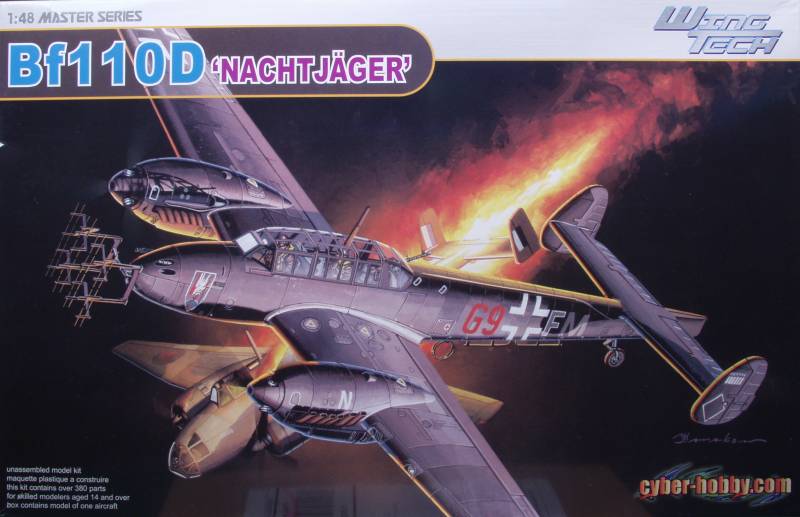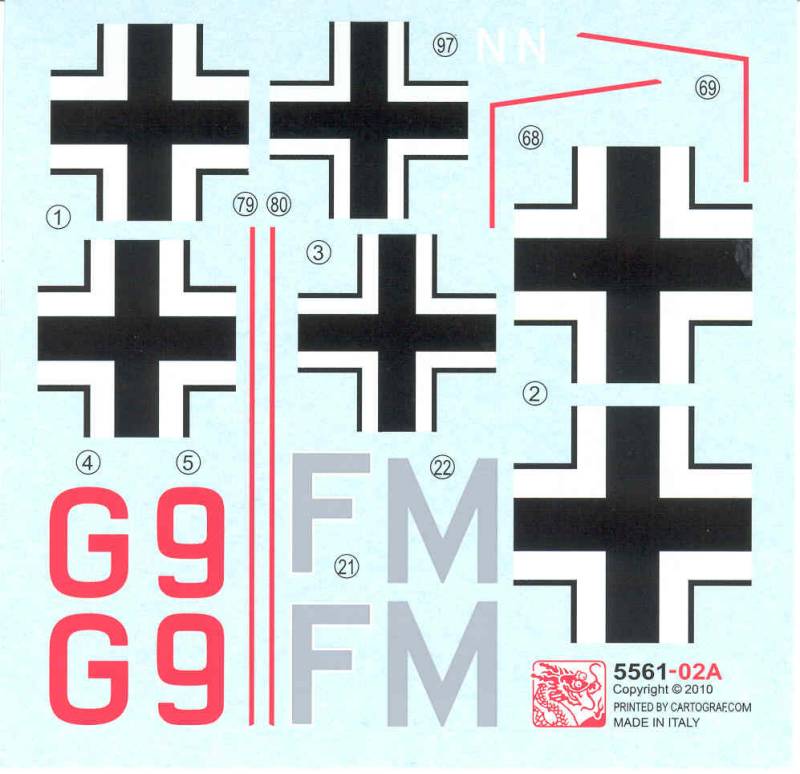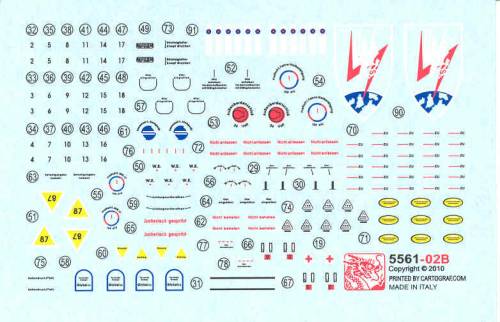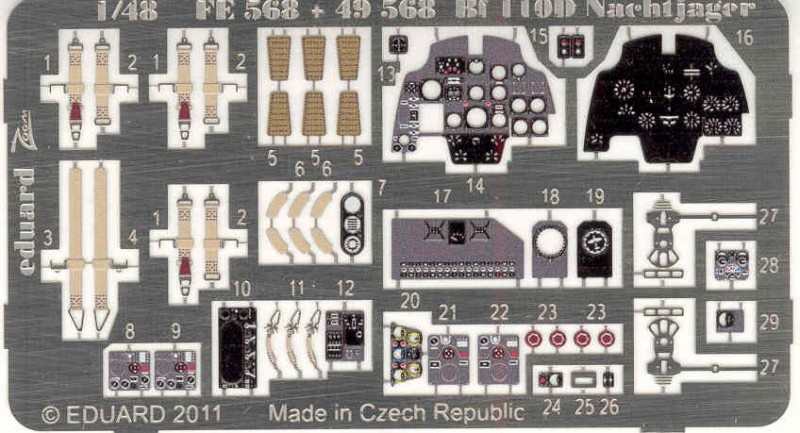
Bf 110D Night Fighter

The Bf 110 series is well documented so I'm not going to go into a protracted history here but instead will concentrate on the specific variant and how it may have differed from earlier variants. While history tends to paint the Bf 110 as a failure based on its performance in the Battle of Britain, it really wasn't the aircraft that was a failure but the concept of a heavy fighter that failed and it wasn't just Germany that found this out as the concept of a heavy fighter was popular among a number of countries during the late 30's. The Bf 110 was found to be useful in many roles and was in production and service for most of the war.
When this kit was first released my initial thoughts was that this was a ploy by Cyber Hobby to get some more mileage out of the "D" series kit as none of my references made any mention of a "D" variant being used as a night fighter, however subsequent inquiries on different online forums pointed me to photos in "Wings of the Black Cross" volume five, of the very aircraft that the kit supplies markings. So there was at least one "D" variant so equipped. Other than the caption in the aforementioned book that the aircraft was equipped with FuG 202 radar and DB 601 N engines, I have no other information on concerning other detail or how many were so equipped. If additional information comes to light I will add it here.
The Kit

This kit is identical to the 110D-3 reviewed here with a couple exceptions so I'm not going to duplicate all the sprue photos. The only difference between them sprue wise is that sprue J with the two large under wing fuel tanks is not included and in its place are sprues M and N which are the parts for the radar antennas shown below. Some thin wire pieces precut to length are supplied to replace the plastic antenna elements on the radar antenna array if you so desire.
The clear parts and the photo etch are the same as well.
The decals sheets are done by Cartograph, well known for their quality, and should give no issues. Markings for one aircraft are supplied from 4 NJG 1, St Trond in 1942.

The instructions are a long page folded in quarters to make 8 panels. Like most instructions sets these days it has a parts map with parts not used marked in blue, an icon chart, a paint color chart with colors for GSI Creos Corp and Model Master paints. The assembly is broken down into ten steps across five panels. The last two panels have painting and marking instructions. The instructions appear clear enough to follow easily.
After Market Goodies
Same as in the D-3 review except that the Eduard Zoom set number is (FE568)

Conclusions
At
the time this kit was released it was on the leading edge of what could
be done in injection molded kits. The use of slide mold technology and
amazing detail molded into some of the parts is very impressive. The
Cyber-Hobby kits are by all accounts easier to build that the somewhat
fiddly Eduard kits which were designed to have all the panels open.
Because of the number of parts involved I would not recommend this kit
to beginners but modelers with a little experience should have no major
difficulties.
Links to kit build or reviews
An in box review can be found here.
References
The only reference I have is the one mentioned at the beginning of this review "Wings of the Black Cross" volume five
Back to the Bf 110 Series Page